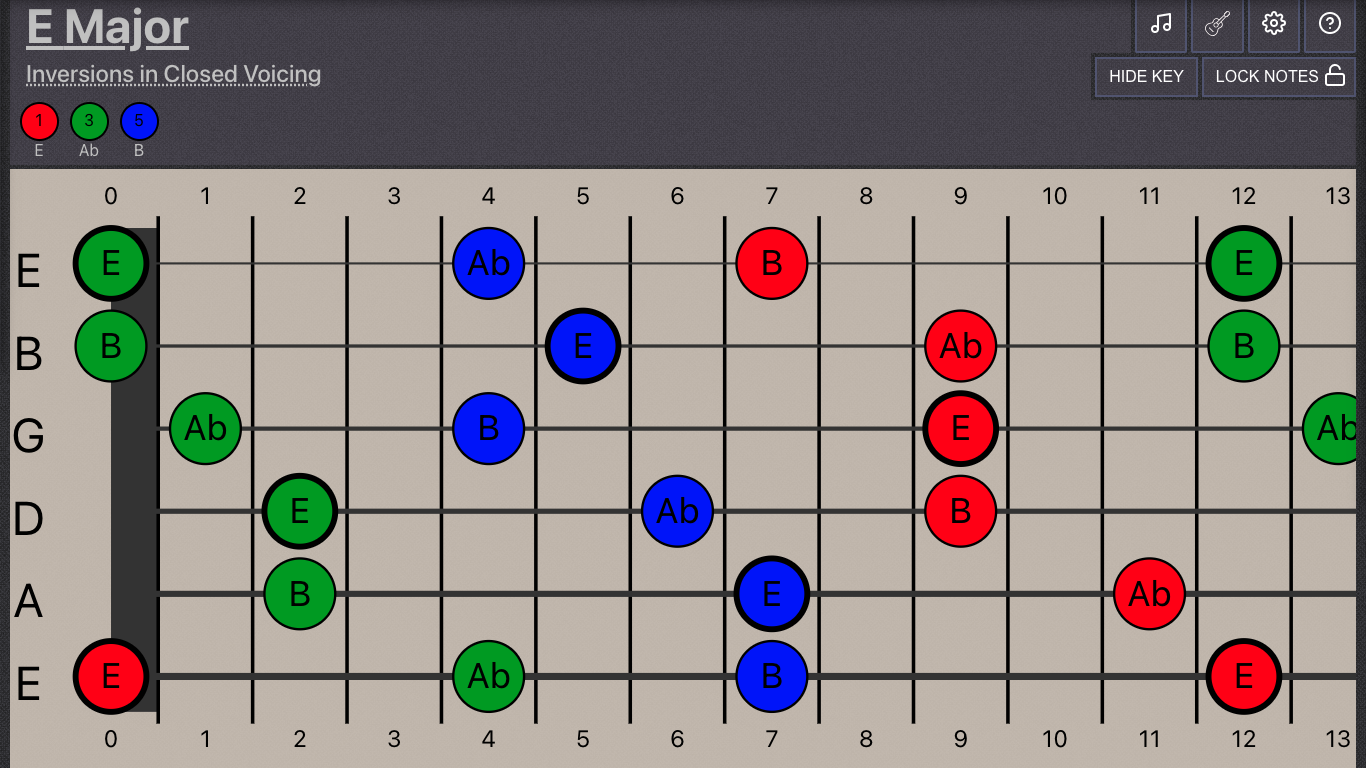Using three note collections to develop practice routines may seem limiting, but their simplicity is provides advantageous opportunities. One crucial aspect of practice routines using only three notes is they allows for a refined approach to survey fretboard opportunities and creative harmony. I have released a new YouTube playlist that is all about practice routines using only three notes.
Youtube Playlist Focussing On Note Thee-Note Practice Routines
There is a playlist on Youtube that provides more information on how to use FretHarmony in conjunction with three note exercises.
Recent posts that have focussed exclusively on three-note chords,
- Practicing Three Note Chords Along Strings
- Practicing Three Note Chords Across Strings
- Practicing Three Note Chords Using Alternate Picking
- Practicing Three Note Chords Using Fingerstyle Picking
- Practicing Three Note Chord Arpeggios Diagonally
Why persevere with three-note exercises?
Focussing on only three kinds of note is constraining harmonically and melodically, many people may question the value of their learning and practicing. Using only three-notes is restricting, but enable a powerful tool for developing fretboard intuition as well as providing a foundation for understanding basic harmony and provide stronger melodic meaning.

Furthermore, breaking down larger chords into smaller collections of notes allows a closer inspection revealing intricate harmonic relationships.
Expanding Ideas To Larger Collections Of Notes
All of the rhythmic variations, patterns and technical concepts discussed throughout the posts are applicable to larger collections of notes. The concepts explain coupling rhythmic motifs, melodic patterns, fretting and picking techniques together into a single symbiotic process. Creating a basic foundation for developing bespoke practice routines to satisfy specific ambitions. As more notes are added, the potential possibilities increase. However, many of the overall concepts remain. For example, how the strings are physically plucked is almost independent from the action of the fretting fingers or harmonic content. It doesn’t matter if we’re playing a three-note chord or a chromatic scale. The plucking hand has specific concerns. Each of the rhythmic and technical exercises explained in the previous posts (linked above) are applicable to harmonised diatonic scales, triad-pairs, tetrads chords and more. See future posts!
Further Thoughts
Using only three-notes offers a wonderful opportunity to focus on a variety of concepts. While these are powerful tools it is worth remembering their limitations. But the simplicity of three notes allows for a logical approach to traversing the fretboard intuitively. Upcoming posts of the blog will explore new subjects. Three-note chords will return in future posts.
